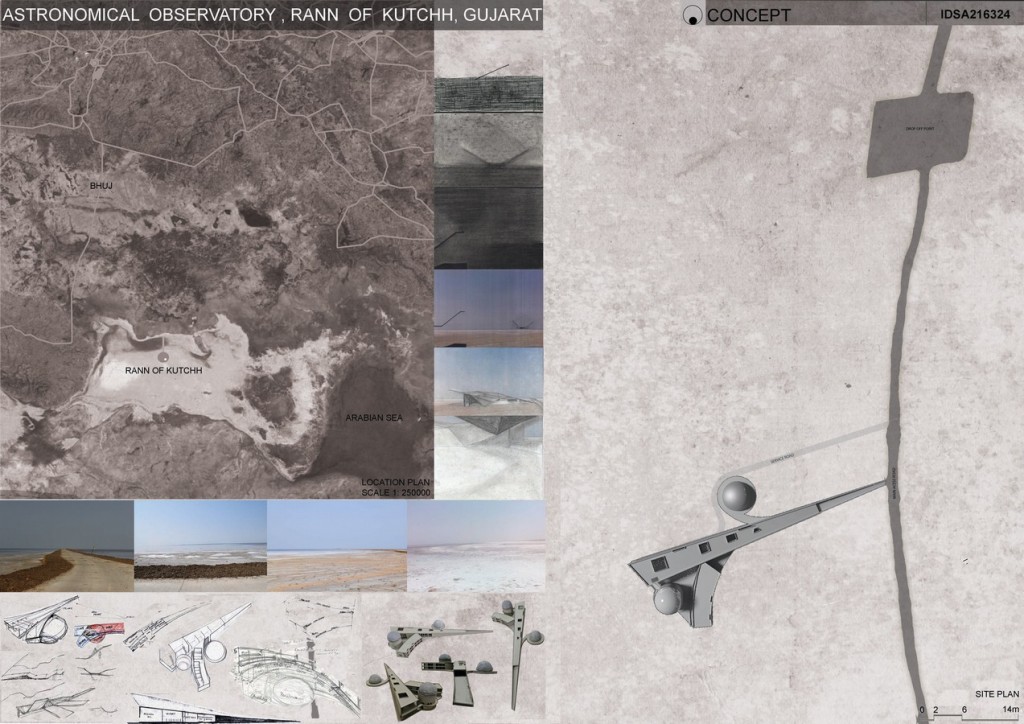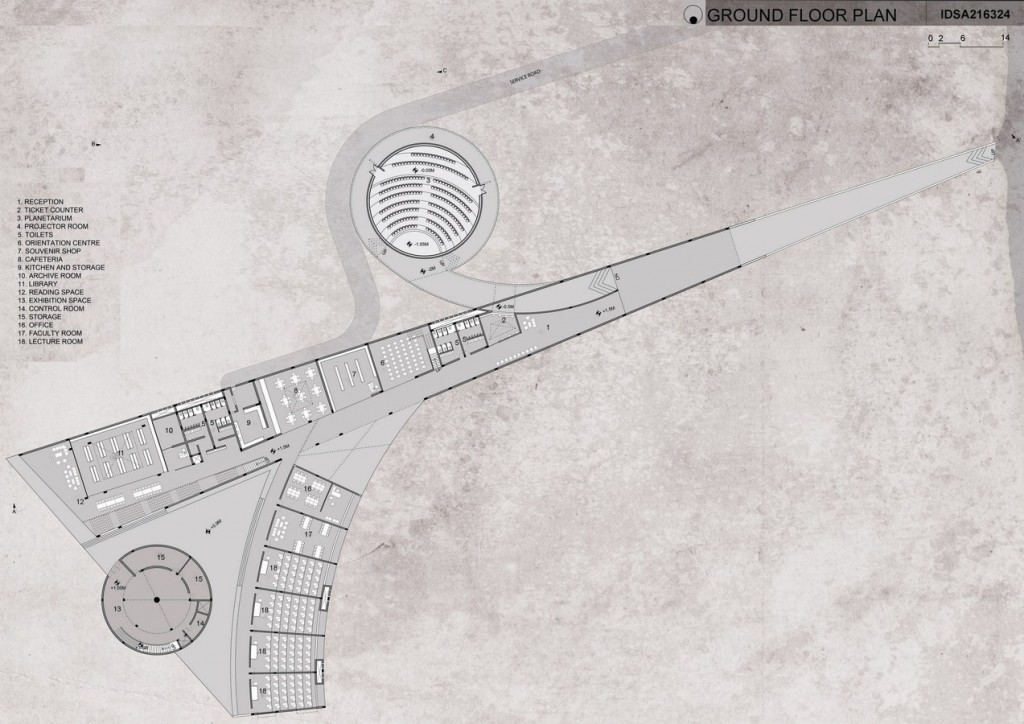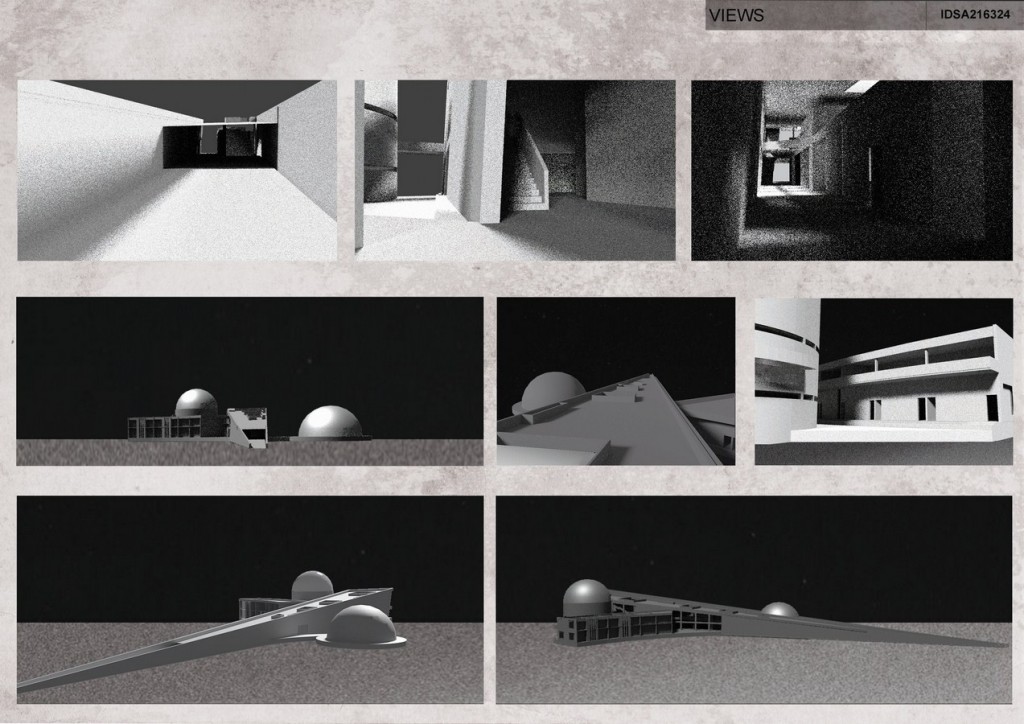The Rann of Kutchh, consisting of the Little Rann and the Great Rann is one of the most unique habitats in India, perhaps one of its kind in the world. The Great Rann is a seasonal salt marsh located in the Thar Desert in the Kutchh District of Gujarat in India and the Sindh Province of Pakistan. (*wikipedia)
An astronomical observatory is proposed in the Great Rann of Kutchh, considering the clear skies, the endless vistas and the lack of urbanization. It seems to be an ideal place to view the skies. By its very nature, it provides the kind of setting to look and to ponder and to wonder about the endless possibilities of the universe.
Participant Name: Sneha Khulge
Category: Institutional
University: KRVIA
Country: India

The astronomical observatory in the Rann of Kutchh is imagined as a journey towards the sky, developed from the idea of a line or a stroke, drawn from the endless horizon, as an attempt to reach the sky.

The building makes connection to the sky by various means like skylights, decks, courtyards, the sloping roof and the astronomical telescope itself, as one travels through the building. Various functions like the planetarium, optical observatory, lecture rooms etc are released out of the linearly organized functions. The public (linear) arm and the semi public (curved) arm of the building meet at the cafeteria, while the private functions such as the guest rooms and the research centre are organized on the upper level.

A single flight of steps, leads one to the roof, thus reinforcing the movement of reaching the sky. The sloping roof gets activated at night by the observers for star gazing, while during the day time, the mezzanine level can be used to sit and relax.

Since the Rann of Kutchh experiences harsh climate, the south façade of the building is kept dead without any openings. External corridor, one of the common typologies found in Kutchh, is adopted for this building, thus creating an intermediate space between the inside and the outside. The observatory rises above the building to obtain a clear view of the sky. Struve’s telescope, made of half open framework of steel is adopted in the optical observatory. The optical observatory is artificially ventilated and provided with minimum openings to maintain the necessary environment.
Next Post
Aurora Borealis | Gaith Rahwanji
2 Mins Read





